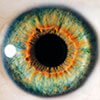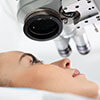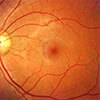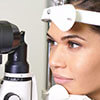The Bailey Blog
Episode 2


Greetings and salutations fellow eye care professionals,
Let’s talk about dry-eye…Yay! Wait, where are you going? Ok, I know I know. Not exactly a sexy topic for many of us, but an important one. Particularly as it relates to a subset of patients who are presenting for cataract surgery. Aha! Hence, my special interest.
Several studies have demonstrated that under-treated ocular surface disease can affect the accuracy of IOL calculations. I have also seen firsthand in my practice how dry eye affects patient visual quality, lens options, and overall satisfaction with their vision. Especially that undiagnosed dry eye patient, who may just have had selective hearing on the subject pre-op, and who is convinced the cataract surgery must have caused the problem.
So what do we do? Well first, make the diagnosis. The majority of cataract patients will have some level of concomitant ocular surface disease. Asking just a few questions at the cataract evaluation will usually uncover it. There are several great questionnaires out there. Take your pick. My favorite simple question is, “Does your vision fluctuate?” Most say yes when fluctuation is described. Then, educate the patient. Even if the DE is mild, I explain the effects on visual quality, the progressive nature, and that treating both the ocular surface and the cataract will give the best result now and in the future. And then of course start treatment. Protocols abound and are nuanced, so here’s my quick and dirty.
Mild: initiate ATs at least QID pre-op, adjust post-op. Can usually proceed with surgery immediately
Moderate: AT’s QID- Q2, add low dose steroid x 2 weeks, plugs, additional meds (Xiidra etc), meibomian gland treatments (ILUX / Lipiflow) as indicated. Generally give a couple of weeks for improvement prior to surgery. This usually works out with scheduling surgery 2-3 weeks out.
Severe: All of the above – postpone surgery until noticeable improvement. With aggressive management, can often see distinct improvement within a month.
* address lids as indicated*
I have an illustrated dry eye instruction sheet I provide to patients linked here.
A special note about meibomian gland treatments. We do offer Lipiflow and ILUX in our offices. For those cataract patients who would like Vision Correction, this treatment is included in their VC cost and will simply be provided. For patients choosing standard cataract surgery, the cost is reduced. Again the goal is the best outcome. Also, for anyone already providing these services, that’s wonderful! Let’s coordinate. Initiating dry eye therapy prior to cataract surgery referral can be very helpful in expediting care and is highly encouraged. Again, our shared goal is the best visual outcome and happy patients. Working together we can get them there!
Have a great week!
– Kristi Bailey MD
Episode 1









